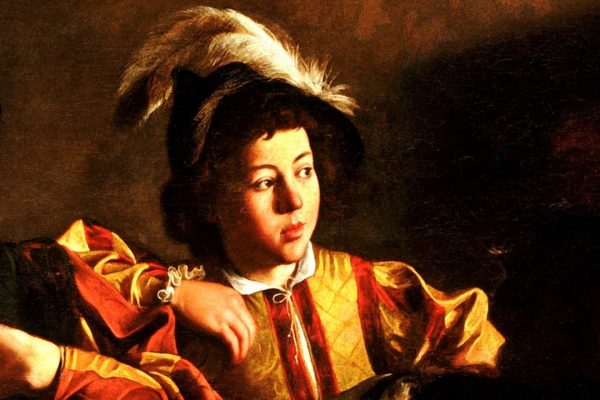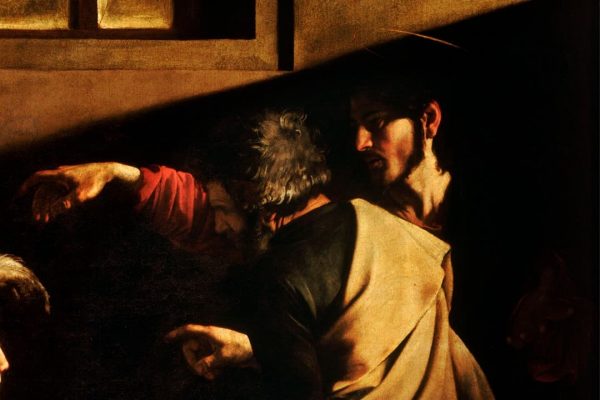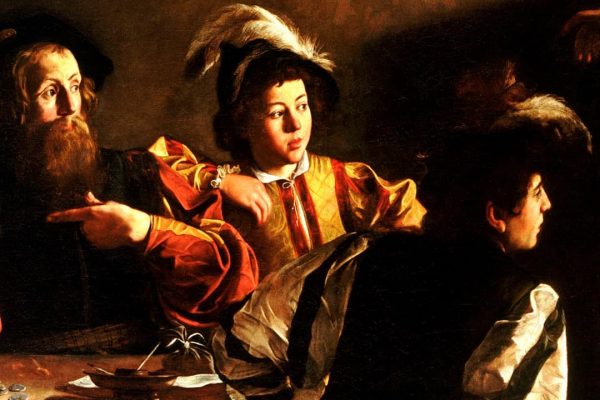Caravaggio · The Calling of Saint Matthew
1599 – 1600 – Oil on canvas – San Luigi dei Francesi, Rome
Although Art history is full of stormy, violent and even self-destructive personalities, few of them seem to be as fascinating as Michelangelo Merisi da Caravaggio (1571-1610), whose fame as a talented painter was paired with his reputation of being a bad-tempered drinker. It is said that the old taverns of Rome feared the violent Caravaggio, as skilled with the brush as he was with the knife.
But Caravaggio was also one of the most innovative artists in Western painting, to the point that he is often referred as the “father” of Baroque Painting. Caravaggio’s chiaroscuro became so famous that many painters started to copy his paintings. In addition, Caravaggio can be considered as the most important influence to many later masters such as Rembrandt or Velázquez.
“The calling of Saint Matthew” was the first of the three compositions that Caravaggio created for the Contarelli Chapel in Rome, an important commission obtained thanks to his patron, Cardinal Francesco Del Monte. It is a sensational work, a quintessence of Baroque painting. As Giulio Carlo Argan noted in 1976, all in this picture happens in an “instant of light”, a light that seems to come directly from the figure of Christ. But, paradoxically, this light seems to shine directly to the young sinner at the center of the composition, as if that figure was really the main character in the scene
Text by G. Fernández, theartwolf.com
Follow us on:





